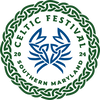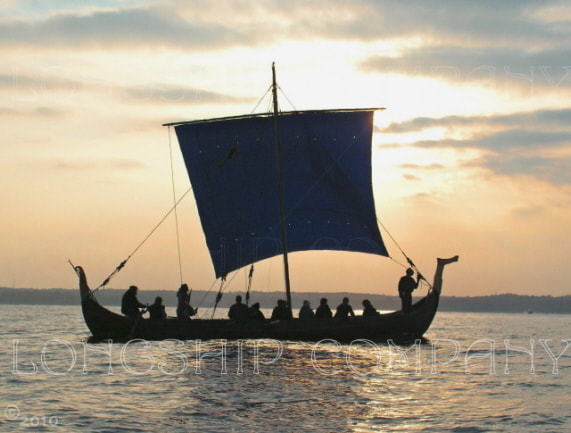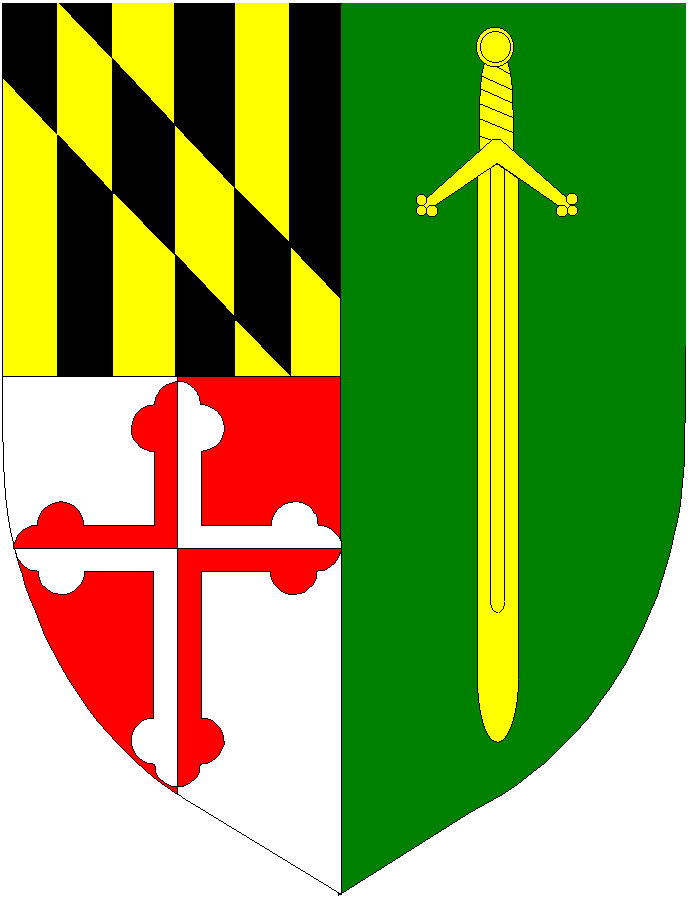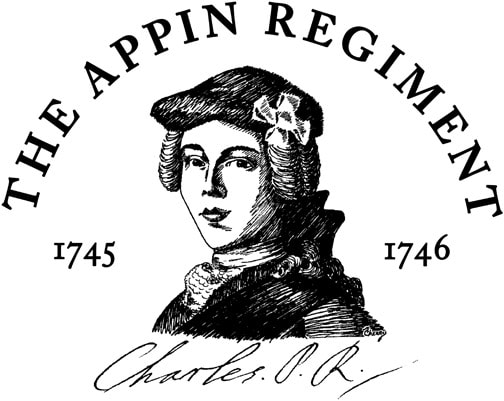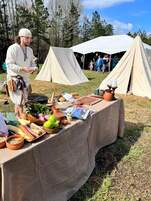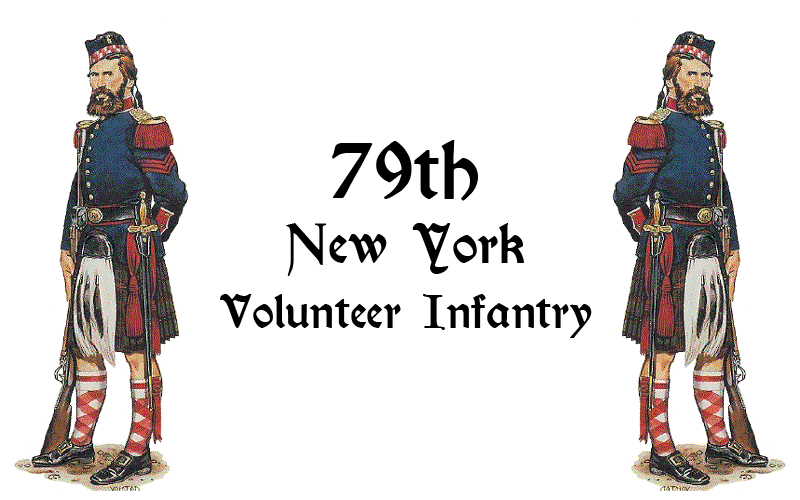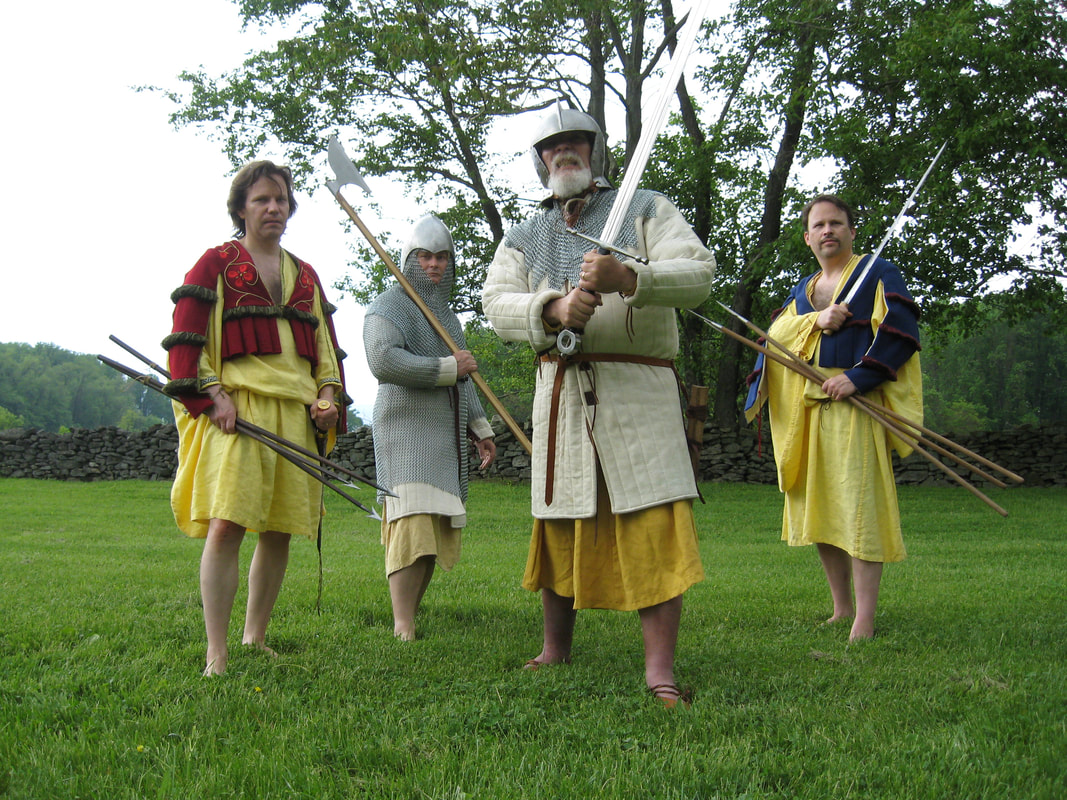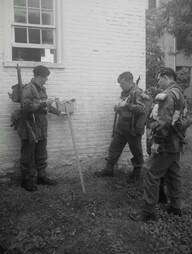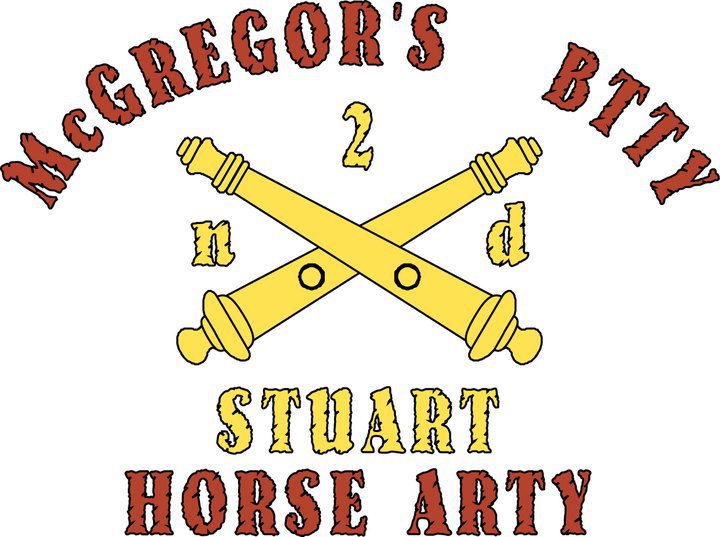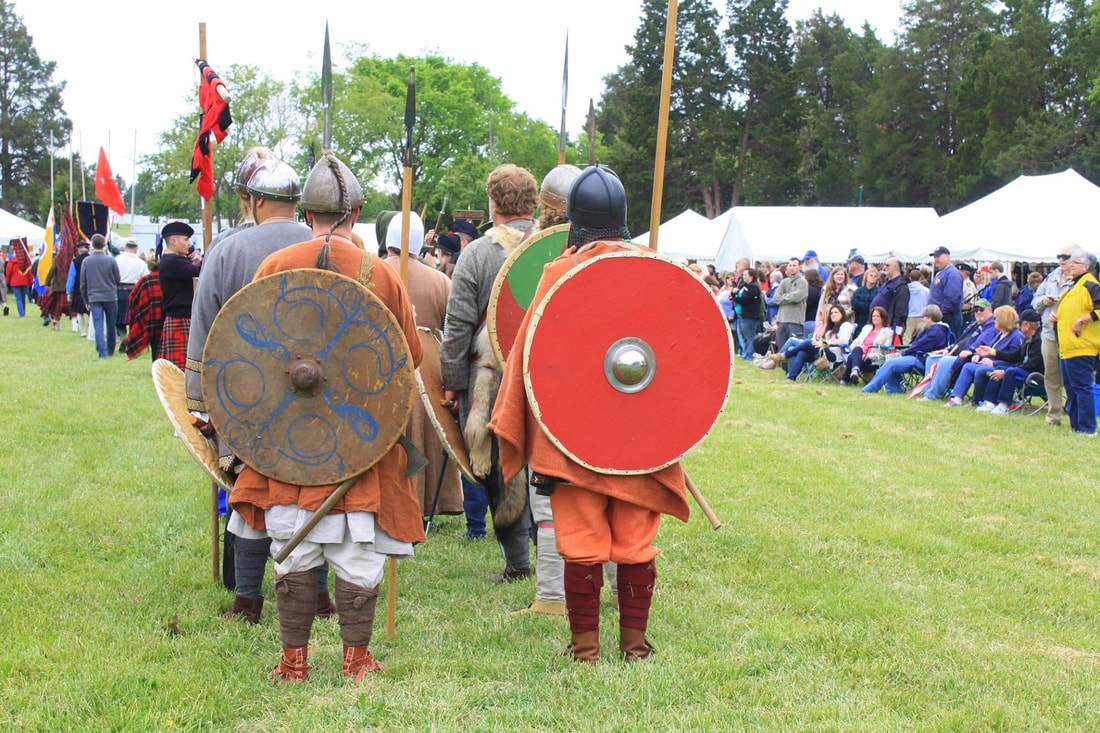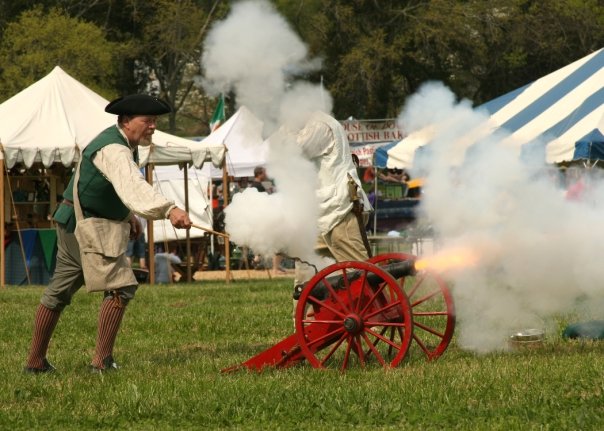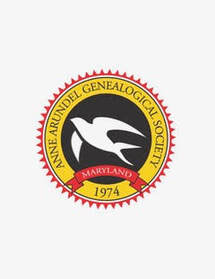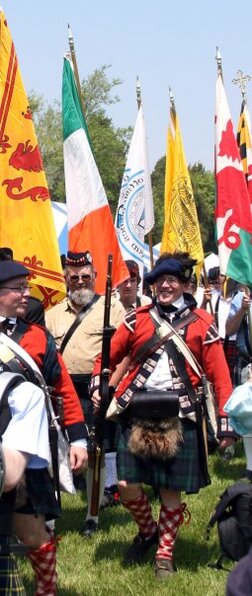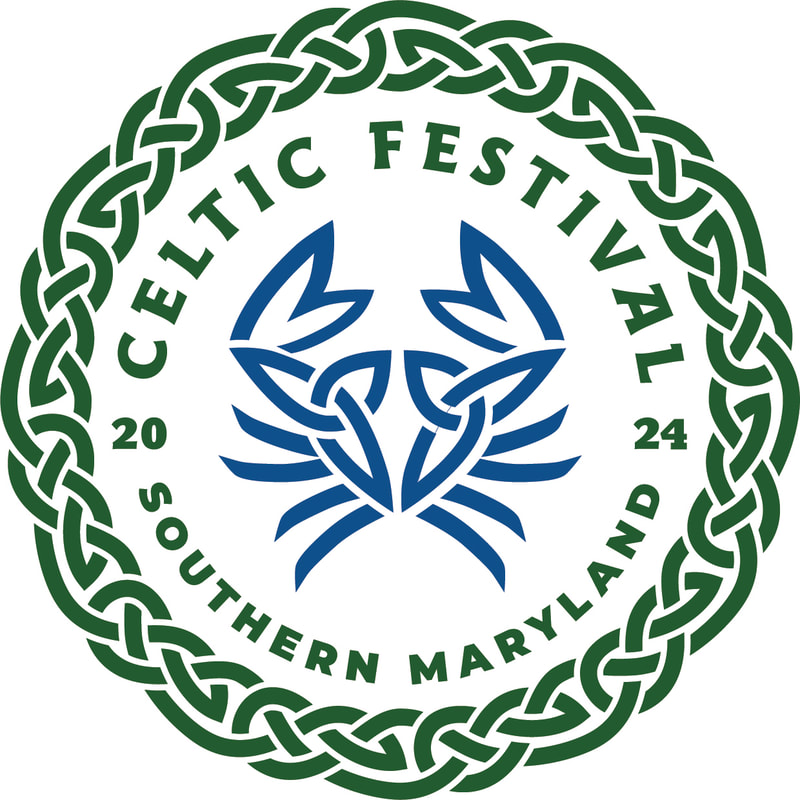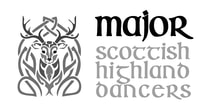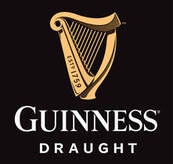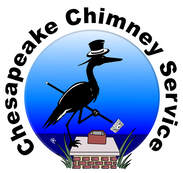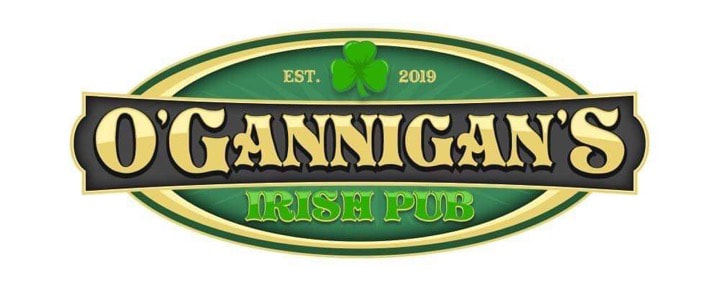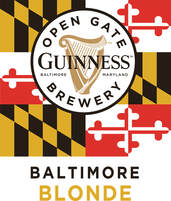Time |
Living History, Genealogy and Clans |
All Day |
Living History Camp Opens Demonstrations All Day - Site 13 Genealogy Information - Site 15 Clan and Society Information - Site 5 |
12:00 PM |
Welcoming Ceremonies: Parade of Clans and Nations; Living History Regiments; and Massed Bands - Site 7 |
2:45 PM |
|
4:00 PM |
|
5:30 PM |
|
6:30 PM |
Ceilidh - Off Site O'Gannigan's Irish Pub Pr. Frederick, MD |
Want to know more about the Living History Groups?
|
Longship Company, Hrafnvik Herlith
|
The Viking age in Ireland lasted for nearly two centuries, beginning with raids on Irish monasteries and ending ultimately with the peaceful settlement of the Norse and eventual melding into the Irish culture. Although the Vikings are well known for those early raids, the Norse nevertheless had a positive impact on Ireland by establishing the first towns such as Dyflinn (Dublin), Vadrefjord (Waterford), Weisfjord (Wexford), Cork, and Limerick. The Vikings were also successful in expanding Ireland’s sea trade as well as contributing significantly to Irish art.
It is spring in the year 930 C.E., somewhere along the south eastern coast of Ireland. We are an encampment of Norse Traders based in Dyflinn (Dublin) operating under the Danelaw. After just returning from a trading voyage to Jorvik (York, England), on our return back to Dyflinn and after just crossing the Irish Sea, our winds have turned unfavorable forcing us to land our ship the “Sae Hrafn” and wait out the return of the winds. Hrafnvik Herlith is a living history group specializing in 800-1066 Norse lifestyle, fighting, and encampment. We are a subgroup of The Longship Company , who operates two reproduction Viking ships out of Solomon’s Island, Maryland who will be displaying the smaller of our two vessels called the “Gyrlfalcon” a 20 foot faring boat based on the Gokstad faring burial ship. Back to the Living History, Genealogy, and Clan Schedule |
|
Welsh Court of Powys Fadog, Calvert-Arundel Swordsmen
|
Today, the Swordsmen are portraying members of the Welsh Court of Powys Fadog in 1255. Their prince, Gruffyd II ap Llwellyn, is preparing for the call to arms in support of Llwellyn ap Gryffud, who is seeking to be recognized as Prince of Wales. This looming conflict will pit brother against brother, so there’s a tension in the air, despite our attempts to take a small ease from our preparation and cares. We have come a short distance from the seat of Prince Gruffyd’s home, Dinas Bran overlooking the town of Llangollen, for fresh air and respite from the preparations.
Our impression centers around that small break from the call to arms for his Welsh supporters. We range from the Prince of Powys Fadog to townspeople who have come to support their countrymen. It’s the time of chain mail, sword, and shield fighting. Visit the 1250s and the final flowering of chain mail and sword combat. The end of this century sees a major transformation of armor to partial plate armor, culminating in full plate in the next (14th ) Century. Discover for yourself why battles like Crecy and Agincourt worked out the way they did. The Calvert-Arundel Swordsmen carry on the tradition of fencing demonstrations here at the Festival. In addition to their historical reenactment, they will also conduct a modern fencing demonstration. Working to demonstrate the techniques of practical and sports aspects of swordplay, the Swordsmen’s demonstrations are generally not choreographed. The Swordsmen have performed at numerous festivals and parades, local institutions, the Scottish Court at the Maryland Renaissance Festival, etc. The Calvert-Arundel Swordsmen provide training and practice in classic foil, saber, and epee fencing. Some members have branched out into other fencing styles, while others fence competitively. The Swordsmen meet regularly on Wednesdays in Calvert County, Maryland at 7:00, with monthly meetings for the reenactors (not all of whom fence). They will be conducting today’s fencing demonstration at 2:45, near the ceremonies stage. They can be contacted through: Greg Davis Calvert-Arundel Swordsmen 6411 Old Solomons Island Road Tracey’s Landing, Maryland 20779 Write to them at [email protected] and check out their Facebook: https://www.facebook.com/c.a.swordsmen/ Back to the Living History, Genealogy, and Clan Schedule |
|
The Appin Historical Society
|
The Appin Regiment portrays the Stewarts of Appin, one of six Highland Clan Regiments in the ill-fated army of Bonnie Prince Charlie (Charles Edward Stuart Stewart), who played a key role in the last and most notorious Jacobite uprisings in Scotland, which culminated in the disastrous battle on Culloden Moor on 16 April 1746.
Appearing at Celtic and Scottish festivals in Virginia and Maryland, the Appin Regiment presents a number of scenarios. This year the Appin Regiment presents the Highland army on the march. Carrying only the essentials, and unencumbered by a wagon train, the Regiment demonstrates the relatively new concept of fast moving light infantry capable of surprising their enemy through speed, stealth arid ferocity. Typical demonstrations include discussions of Highland clothing, Scottish weapons and military tactics, Scottish food, agriculture and cooking, the crafts and technology of the period, and the organization of Highland society in the mid-eighteenth century. The Appin Regiment is presented by the Appin Historical Society and is committed to education by making real history come alive. Back to the Living History, Genealogy, and Clan Schedule |
|
Þæt Ƿicgild
|
Þæt Ƿicgild is a reenactment and living history group portraying life in the 8th and 9th century along the North sea from Scotland, to Norway, to France, to England and anyone that would typically find themselves in these areas in this time period such as monks, pilgrims, and merchants. Our goals are as much to learn skills and history ourselves as it is to portray it.
Back to the Living History, Genealogy, and Clan Schedule |
|
79th New York Cameron Highlanders Regiment
|
The 79th New York was a militia unit formed of Scottish immigrants living in New York City (Manhattan Island) in 1859. They wore a full Highland uniform consisting of Highland cut coats (doublets), glengarries (a Scottish military bonnet), and kilts of Cameron of Erracht modern tartan. When the American Civil War began the regiment volunteered for service in the Federal Army. A dress parade was held to mark their departure from New York. The original members wore the Highland dress uniform. New recruits wore the Highland fatigue uniform: kepis, NY jackets, and Cameron of Erracht trews. Music was provided by the pipers of the NY Caledonian Society. The regiment traveled to Washington where they repeated the spectacle with the regimental brass band filling in for the pipers who had stayed behind.
The 79th New York Volunteer Militia Company A preserves the Civil War heritage of our country and the historical role played by the ordinary soldier from 1861 to 1865. To achieve this purpose, we present to the public a historically accurate and educational picture of the average Union Army soldier. Through participation in historical reenactments, living history events, and first-person demonstrations in south-east Virginia, the mid-Atlantic region, and throughout the United States; our members strive to recreate an accurate portrayal of the soldier’s experience. The objective of this portrayal is to help the public understand the dedication and sacrifices our forefathers committed to the Union cause. Back to the Living History, Genealogy, and Clan Schedule |
|
Wilde Irishe
|
Wilde Irishe is a living history group centered in the Mid-Atlantic. We portray military and civilian Gaelic Irish of the period 1525-1600, when they waged a series of rebellions to maintain their political and cultural independence against the Dublin-based crown authorities of Tudor England.
The disparaging term 'Wilde Irishe' appears as early as 1446, and by our period was the Dublin government's name for those of the native Irish who did not recognize the crown's authority. Later generations 'owned' the term as an ironic badge of pride." Contact: [email protected] Back to the Living History, Genealogy, and Clan Schedule |
|
The Combined Operations Living History Association
|
COLHA is a group of dedicated living historians that strive to accurately portray the history of the British Commandos during the Second World War. For the Southern Maryland Celtic Festival, members of COLHA will be presenting a Bren Section of No. 4 Army Commando during Operation Overlord (aka D-Day) in June 1944.
Formed in 1940, No. 4 Army Commando had strong ties to Scotland. The Commando spent much of the war stationed and training in Ayrshire, and was led by Simon Fraser, 15th Lord Lovat. This year’s display will focus on the fighting during the late afternoon of June 6th, 1944. No. 4 Commando was a part of the second wave to land on Sword Beach on June 6th. After taking the coastal town of Ouistreham, the Commando pushed six miles inland to link up with members of the 6th Airborne Division. By dusk on 6 June, the Commando had taken fighting positions in the bocage of Normandy to await German counter attacks after dark. Contact: [email protected] Back to the Living History, Genealogy, and Clan Schedule |
|
McGregor’s Battery, CSA
|
Troops of Celtic ancestry played an important role in the American Civil War. The descendants of the Scots-Irish colonists of the 1600s and 1700s fought on both sides, often in major command positions—Generals McClellan and Stuart were merely the most famous.
The original McGregor’s Battery was a horse artillery unit serving with the cavalry corps of the Army of Northern Virginia. Commanded by William McGregor, the unit fought in all the major battles of the Army of Northern Virginia, including Gettysburg. Today, a small detachment of McGregor’s Battery is scouting for a good position to emplace their four cannons. The modern McGregor’s Battery is a unit of the North-South Skirmish Association, competing in individual and team shooting competitions with Civil War arms including rifle-musket, carbine, revolver, and mortar. Members of the unit have won medals for the United States at the World Muzzle-Loading Championships. Back to the Living History, Genealogy, and Clan Schedule |
|
Army of the Uí Néill
|
Na Fianna Uí Néill represent a small Fiann, or war band raiding into Dublin lands immediately after the battle of Tara in 980 AD. On one side there was a Norse army from the Kingdom of Dublin supported by troops from the Hebrides, which was commanded by a son of Olaf Cuaran named Ragnall. The other side was led by Máel Sechnaill mac Domnaill, who had recently come to power as head of the southern Uí Néill. The latter's force consisted of troops from his home province of Mide (the Kingdom of Meath), probably with strong support from troops from Leinster and Ulster.
The battle ended in a devastating defeat for the Norse of Dublin. Olaf abdicated and died in religious retirement in Iona. Dublin was besieged by the victorious Máel Sechnaill, who forced it to surrender slaves and valuables, as well as give up all its prior claims to Uí Néill-held territory. In the following decade, Dublin was more or less under the control of Máel Sechnaill and the Southern Uí Néill. The Battle of Tara is regarded as a far more decisive defeat for the Norse of Dublin than the later, and much more famous, Battle of Clontarf. Olaf Cuaran was the last of the great Norse kings in Ireland, and following him the status of the Kingdom of Dublin was never the same again. Back to the Living History, Genealogy, and Clan Schedule |
|
Celtic "Battle"
A Historical Re-Enactment |
At 4:00 p.m., on the hill behind the vendors, facing the river, occurs one of the louder and more expansive demonstrations of the day. Our annual Celtic “Battle” draws upon the talents of the participating living history groups, with the addition of a few other participants, such as Rob Piland and his cannon.
The Celtic Battle is an opportunity for our Living History groups to conduct simulated combat for our guests and demonstrate their different capabilities. Because the combatants are from the various units attending the Festival, each battle is planned that day and designed to show the best of the different groups. Since the re-enactors portray many different time periods, expect to see anything from shield-walls and charges to musket volleys. During the 20 minutes or so that the “battle” lasts, the audience gets a chance to see various units maneuver, cross ground under fire, and perhaps even close with their opponents in personal combat. Afterward, you can have the opportunity to mingle with the participants, and ask questions. BE AWARE!!!! Because the re-enactors are using real weapons, there is serious risk of injury, so please move if you are asked, and for your own safety, please keep to those areas where the audience is asked to remain until after the battle. Come for the action when you hear the blast from the cannon! Back to the Living History, Genealogy, and Clan Schedule |
|
WicSaga
|
WicSaga is a reenactment and living history group which focuses on representing various cultures during Late Antiquity through the Early Medieval period/Viking Age displaying everything from everyday domestic life to martial endeavors. We aim to build an academic and research based living history community that is accessible to many different people with guidelines and support to build a kit on a budget.
Contact: [email protected] Back to the Living History, Genealogy, and Clan Schedule |
Want to know more about Genealogy and Clans?
|
Genealogy Information Booth
|
Stop by the Genealogy Information Booth open ALL DAY!
Members of the Anne Arundel Genealogical Society will be available to answer your questions and provide you with Genealogy advice and some of the resources you may need to discover and research your family history. We have several free handouts with resources for "Getting Started in Your Family Research,” and for doing genealogical research in the Seven Celtic Nations and more. Although focused mainly on Scotland, Ireland, Northern Ireland, and Wales, we have an informational poster and handouts for Brittany (France), Manx (Isle of Man), Cornwall (England) and Galicia (Spain). We also offer handouts on DNA/Genetic Genealogy, Social Networking, African American and Jewish family research. Questions and participation are welcomed! Ask us for our handouts and start your family Genealogy research today! Back to the Living History, Genealogy, and Clan Schedule |
|
Clans and Societies
|
Find your Celtic Heritage while watching Heavy Athletics in Clan Row surrounding the Athletic field! With nearly 20 Clans and Societies represented at this years Festival, be sure to stop by your Clan tent for updated Clan information and to say Hello!
Clans and Societies Present Today
|
